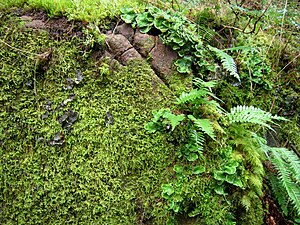Difference between revisions of "Polypodium glycyrrhiza"
Jump to navigation
Jump to search
m (1 revision: From PNW foraging book - part 2) |
(cut down) |
||
| Line 7: | Line 7: | ||
}} | }} | ||
| − | '''''Polypodium glycyrrhiza''''', commonly known as '''licorice fern''', '''many-footed fern''', and '''sweet root''' | + | '''''Polypodium glycyrrhiza''''', commonly known as '''licorice fern''', '''many-footed fern''', and '''sweet root''' |
| − | + | [[Category:Ferns]] | |
| − | + | [[Category:Plants for Keenan to eat]] | |
| − | |||
| − | |||
| − | |||
| − | |||
| − | |||
| − | |||
| − | |||
| − | |||
| − | |||
| − | |||
| − | |||
| − | |||
| − | |||
| − | |||
| − | |||
| − | |||
| − | |||
| − | |||
| − | |||
| − | |||
| − | |||
| − | |||
| − | |||
| − | |||
| − | |||
| − | |||
| − | |||
| − | |||
| − | |||
| − | |||
| − | |||
| − | |||
| − | |||
| − | |||
| − | |||
| − | |||
| − | |||
| − | |||
| − | |||
| − | |||
| − | |||
| − | |||
| − | |||
| − | |||
| − | |||
| − | |||
| − | |||
| − | |||
| − | |||
| − | |||
| − | |||
| − | |||
| − | |||
| − | |||
| − | |||
Latest revision as of 23:05, 13 September 2018
| Polypodium glycyrrhiza | |
|---|---|

| |
| Scientific classification | |
| Unrecognized taxon (fix): | Polypodium |
| Species: | Template:Taxonomy/PolypodiumP. glycyrrhiza
|
| Binomial name | |
| Template:Taxonomy/PolypodiumPolypodium glycyrrhiza | |
Polypodium glycyrrhiza, commonly known as licorice fern, many-footed fern, and sweet root